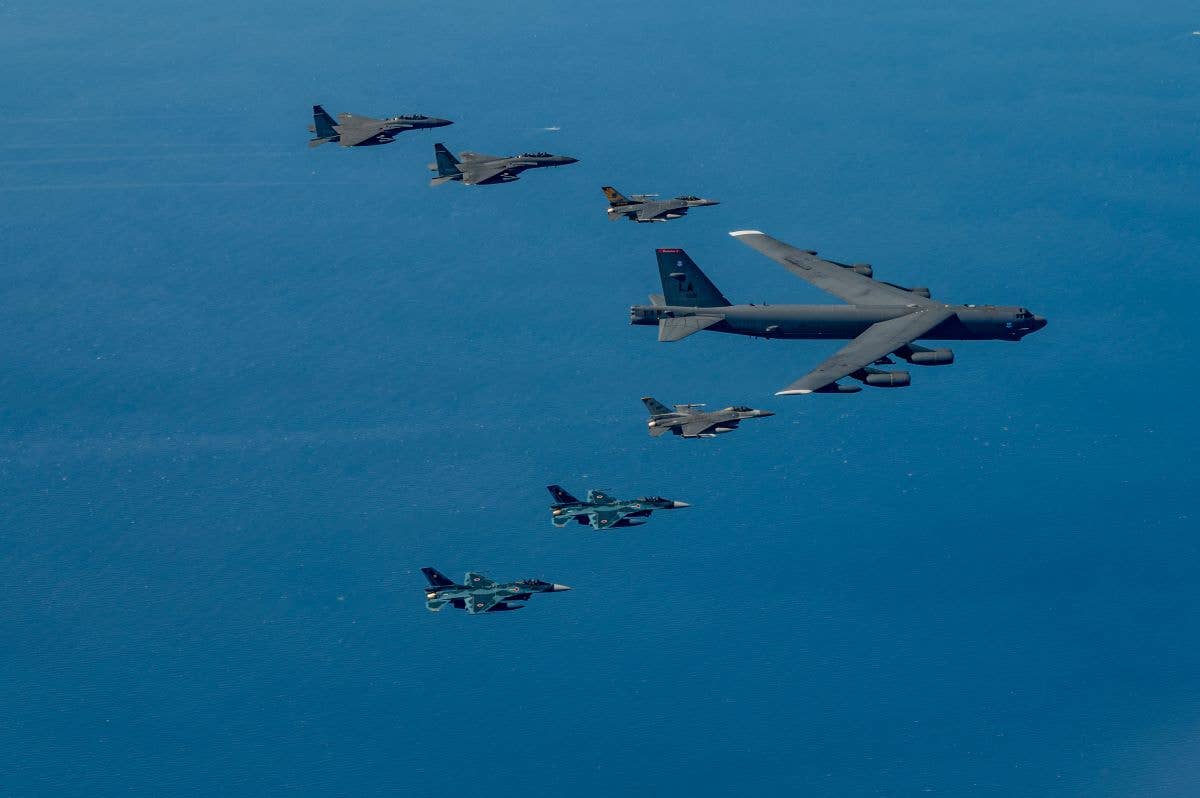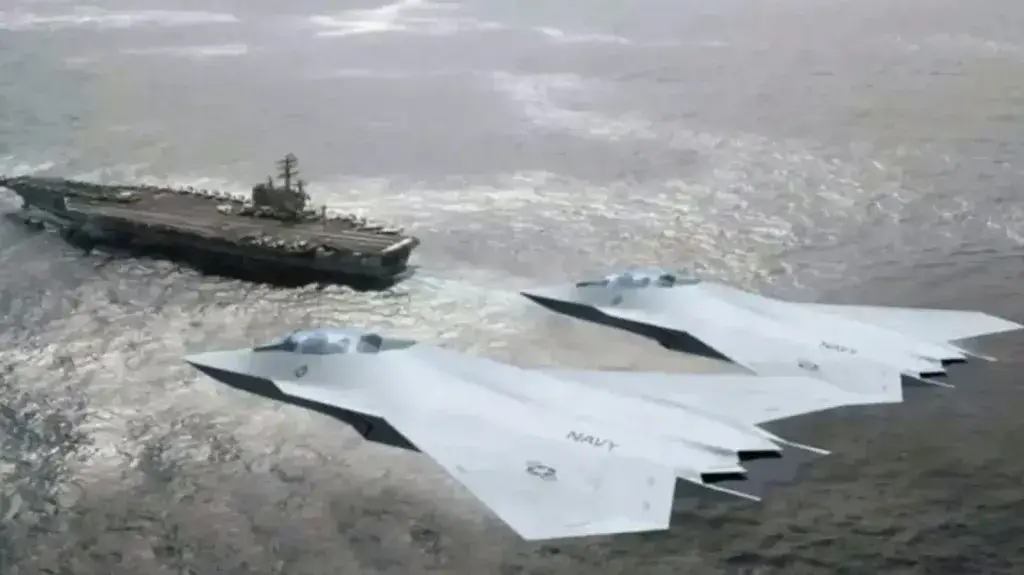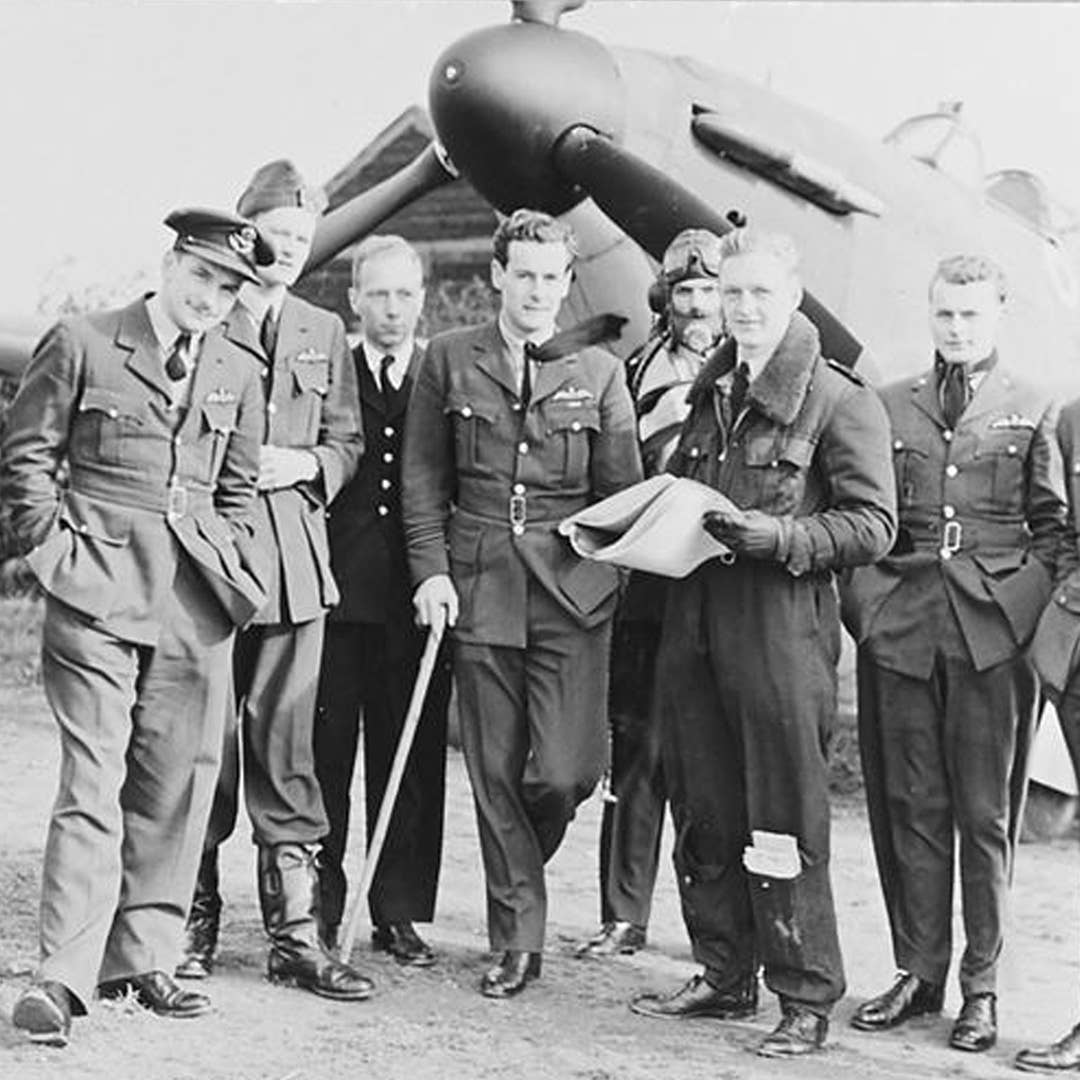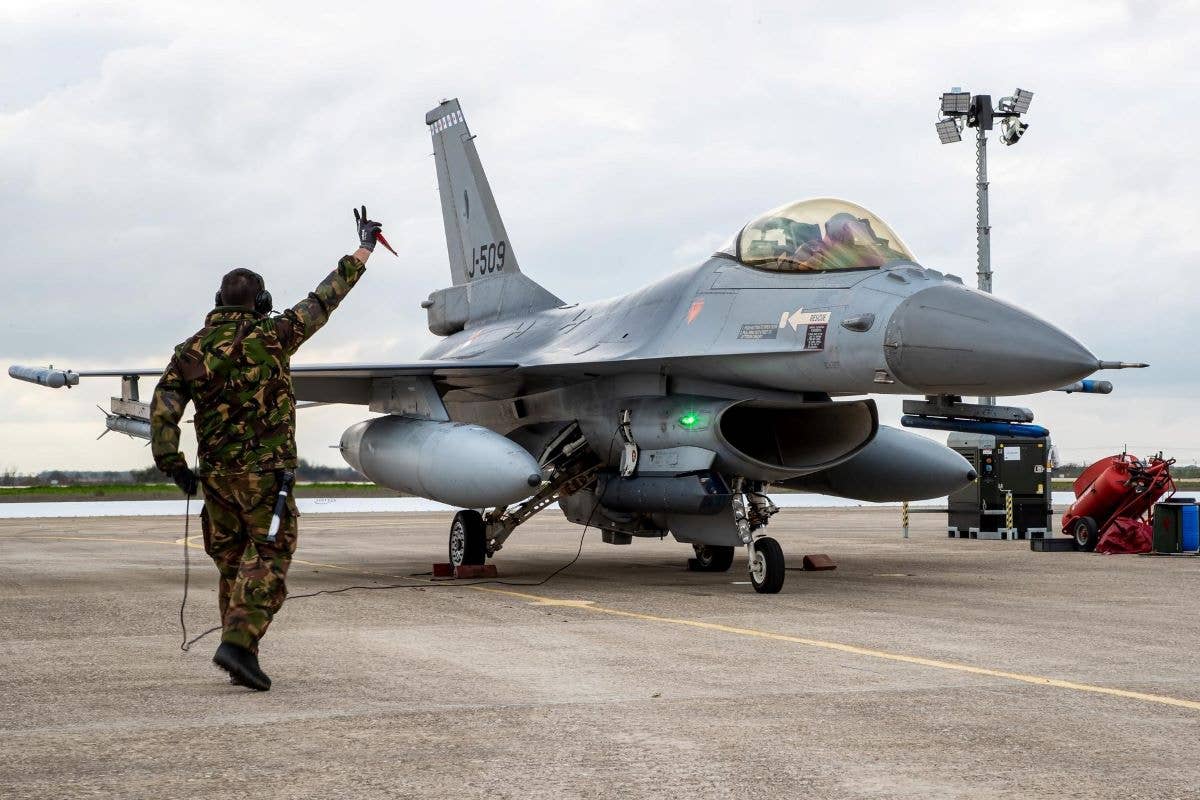U.S., Japan, South Korea Conduct Trilateral B-52 Escort Exercise
Sunday’s drill was the first joint aerial exercise of its kind and occurred as a response to nuclear threats by North Korea.

Fighter aircraft from the U.S., Japan, and the Republic of Korea conducted a trilateral escort flight of a U.S. B-52H Stratofortress Bomber operating in the Indo-Pacific on Sunday, October 22. [Courtesy: Department of Defense]
Fighter pilots from the U.S., Republic of Korea, and Japan conducted a trilateral escort of a nuclear-capable American B-52H Stratofortress heavy bomber in airspace northwest of Kyushu, Japan, on Sunday—a first for the air forces.
The drill—the first joint aerial exercise of its kind—occurred as a response to nuclear threats by North Korea and followed an August meeting of the countries' leaders at Camp David, Maryland. Following that meeting, President Joe Biden, Japanese Prime Minister Fumio Kishida, and ROK President Yoon Suk Yoel pledged to hold "annual, named, multidomain trilateral exercises," Air and Space Forces reported.
Flanking the U.S. Air Force bomber were three U.S. F-16s from the 80th Fighter Squadron, 8th Fighter Wing based at Kunsan Air Base, Republic of Korea; four F-2s from the Japan Air Self-Defense Force’s (JASDF) 8th Air Wing based at Tsuiki Air Field; and two F-15Ks from the Republic of Korea Air Force's (ROKAF) 11th Wing.
"This aerial exercise builds on the continued interoperability of our collective forces and demonstrates the strength of the trilateral relationship with our Japan and Republic of Korea allies,” the U.S. Indo-Pacific Command said in a statement. “Our international cooperation is reflective of our shared values and resolve against those who challenge regional stability. We remain committed to peace and prosperity in the region to uphold a free and open Indo-Pacific."
In a statement, the JASDF said the exercise enhanced its pilots tactical skills and facilitated formation and navigation training while also strengthening cooperation with the U.S. Air Force and the ROKAF.
About 80,000 U.S. troops are based in Japan and South Korea, according to The Associated Press.

Sign-up for newsletters & special offers!
Get the latest FLYING stories & special offers delivered directly to your inbox






